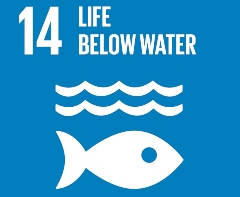.jpg)
Removing harmful pollutants from industrial wastewater with innovative technology
Industrial and municipal water usage places increasing demands on global water resources, while pollution of wastewater threatens aquatic ecosystems.
Researchers at The University of Manchester and Arvia Technology have developed an electrochemical process that has dramatically reduced wastewater pollution levels and enabled water recycling across numerous industries.
Key facts
- Arvia has delivered water treatment solutions to more than 25 companies in 11 countries
- Process removed 90% of pharmaceutical residues and natural hormones in Anglian Water trials
- Arvia has been commissioned to deliver a 93-module treatment plant in China
This work delivers on the UN Sustainable Development Goal 14: conserve and sustainably use the oceans, seas and marine resources for sustainable development.
Reducing pollutant levels
Certain industries – agro-chemical, pharmaceutical, food and beverage, textiles – use vast amounts of freshwater for processing purposes and also produce by-products in wastewaters that harm the environment.
The Arvia process has been used across industries to reduce their overall water demand, decreasing environmental impact, reliance on freshwater supplies, and the cost of water bills.
The Arvia process has reduced pollutant levels from pesticides to match UK drinking water standards and removed 90% of pharmaceutical residues and natural hormones from industrial wastewater.
Using the Arvia process has also reduced water discolouration levels in tobacco manufacturing, enabling on-site water re-use, and reduced the chemical oxygen demand value (a measure of the toxicity of water to aquatic life) of a wastewater feed from one of the largest oil and gas producers in China, to meet the country’s strict 2018 regulations in the Water 10 Law.
A unique process
There are two main approaches to remove coloured, toxic and non-biodegradable organics from wastewater. One is through capture, which involves adsorption of pollutants followed by removal through filtration. The second is destruction, where the pollutants are decomposed into harmless by-products through biological processes or chemical/electrochemical oxidation.
The supply of safe water to the world’s people, animals and plants will be an overriding concern of the 21st century. This means reducing pollution and ensuring, in an affordable manner, a sufficient supply of uncontaminated water. In contributing to solving a world-wide problem, I feel we have registered a notable achievement and I hope we can make a small, yet significant, contribution to a healthier world.
Nigel Brown / Founder of Arvia
The Arvia process is the first process to include both capture and destruction within a single unit.
Initial research demonstrated the effectiveness of the material for water treatment, with a 97% reduction of organic dye from effluent (liquid waste or sewage discharged into a river or the sea) and a 78% reduction of total organic carbon (TOC) and chemical oxygen demand (COD) measurements.
Further research proved the speed of the process, demonstrating that 88% of the equilibrium capacity of the adsorbent could be achieved within two minutes of contact with the effluent.
This was due to a thirteen-fold increase in the conductivity of the adsorbent/electrolyte compared with (traditional) activated carbon.
Putting research into practice
A spin-out company, Arvia Technology (formed in 2007) has now installed treatment systems in 25 companies across 11 countries, including the UK and China, to treat industrially contaminated wastewater.
The Arvia process has also been used to reduce the release of high microbial wastewaters (a cause of anti-microbial resistance).

